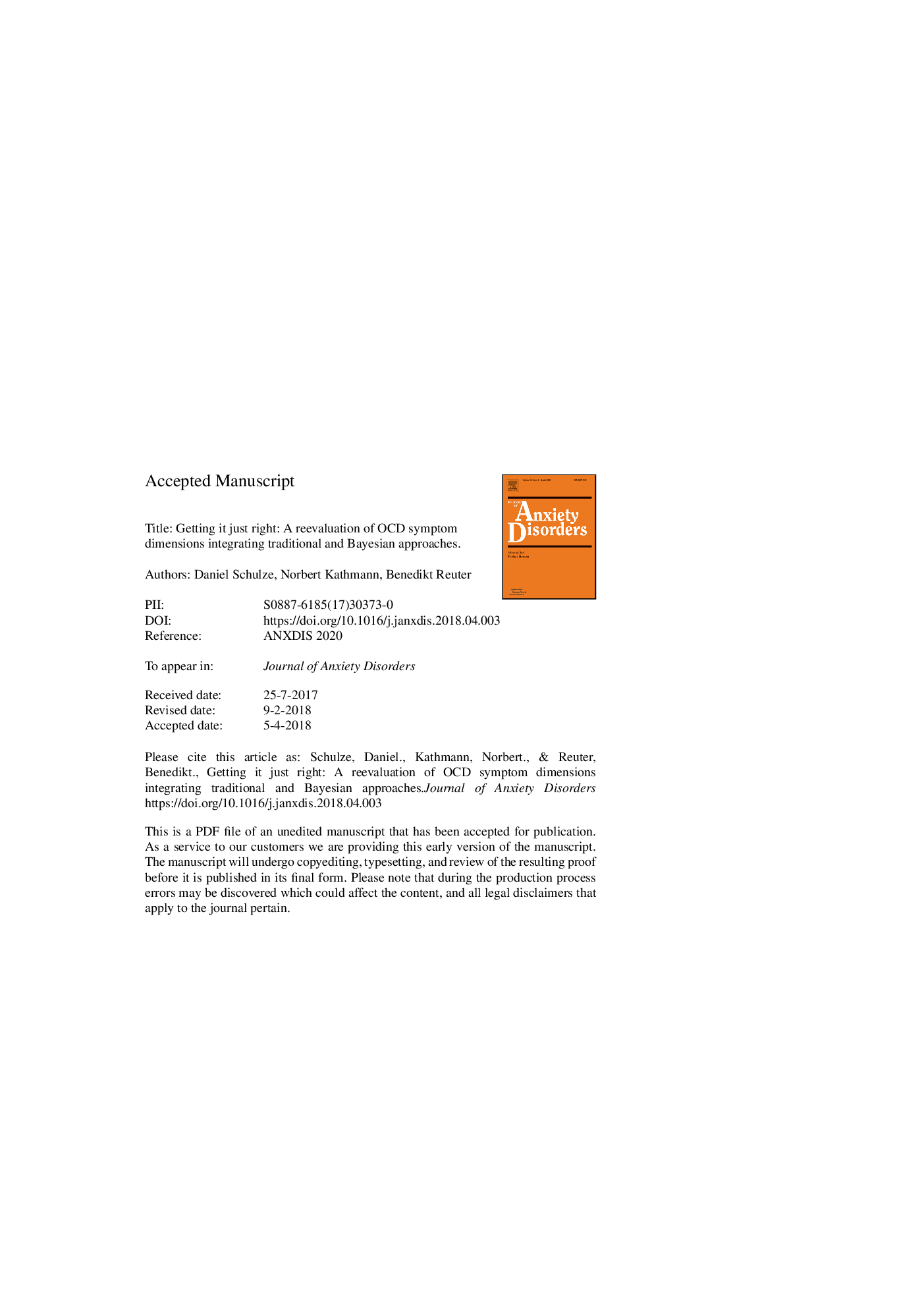| Article ID | Journal | Published Year | Pages | File Type |
|---|---|---|---|---|
| 7266916 | Journal of Anxiety Disorders | 2018 | 38 Pages |
Abstract
Previous research using the Yale-Brown Obsessive Compulsive Scale (Y-BOCS) suggests that the heterogeneous symptoms of obsessive-compulsive disorder (OCD) may reflect four underlying dimensions. However, past results vary substantially, which may be due to (a) the reliance on aggregated scores, (b) the common use of exploratory factor analyses, and (c) the exclusion of several symptoms. The present study tested the homogeneity of the original Y-BOCS categories using confirmatory factor analysis and modified categories where necessary. To test multidimensional models, data were further analyzed with Bayesian structural equation models, which better capture item heterogeneity in contrast to ordinary factor analysis. All analyses were run with two samples of patients with OCD allowing for cross-validation. Only a minority of the original Y-BOCS categories proved to be homogeneous. Modification yielded 10 homogeneous first-order factors, which can be reduced to four second-order factors: Incompleteness, Taboo Thoughts, Responsibility, and Contamination. This two-level factor model outperformed competing factor structures. The results corroborate the notion of four broader symptom dimensions in OCD, although the specific factor structure deviates from previous research. Differences presumably derive from using the full range of OCD symptoms and the combined exploratory and confirmatory approach with BSEM as a theoretically more appropriate analytical framework.
Keywords
Related Topics
Health Sciences
Medicine and Dentistry
Psychiatry and Mental Health
Authors
Daniel Schulze, Norbert Kathmann, Benedikt Reuter,
